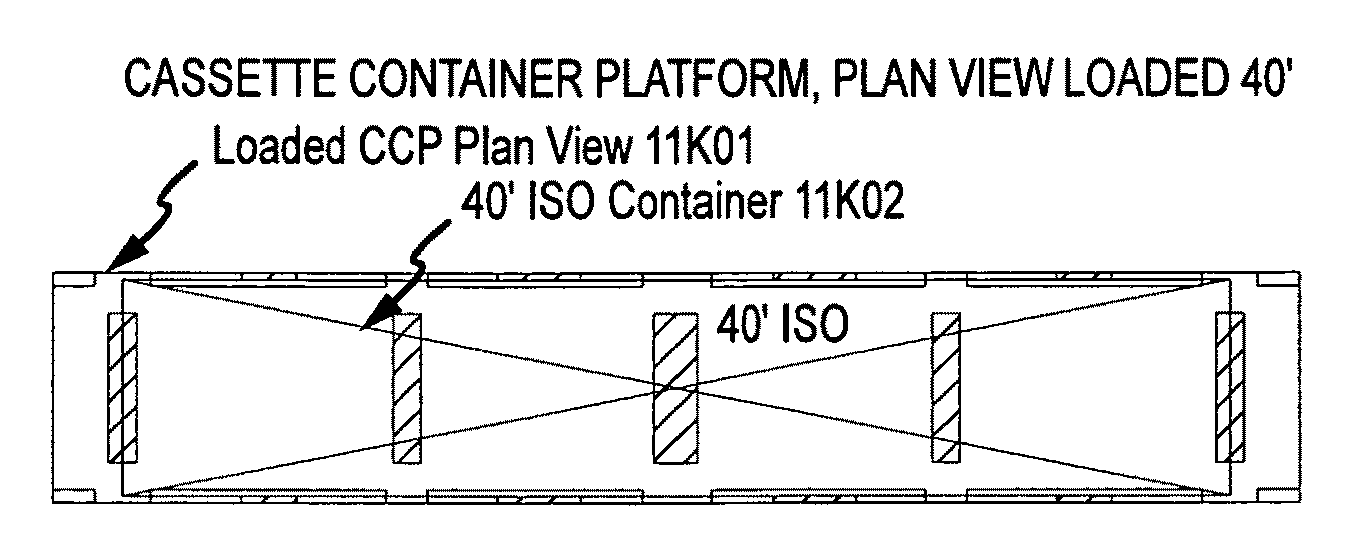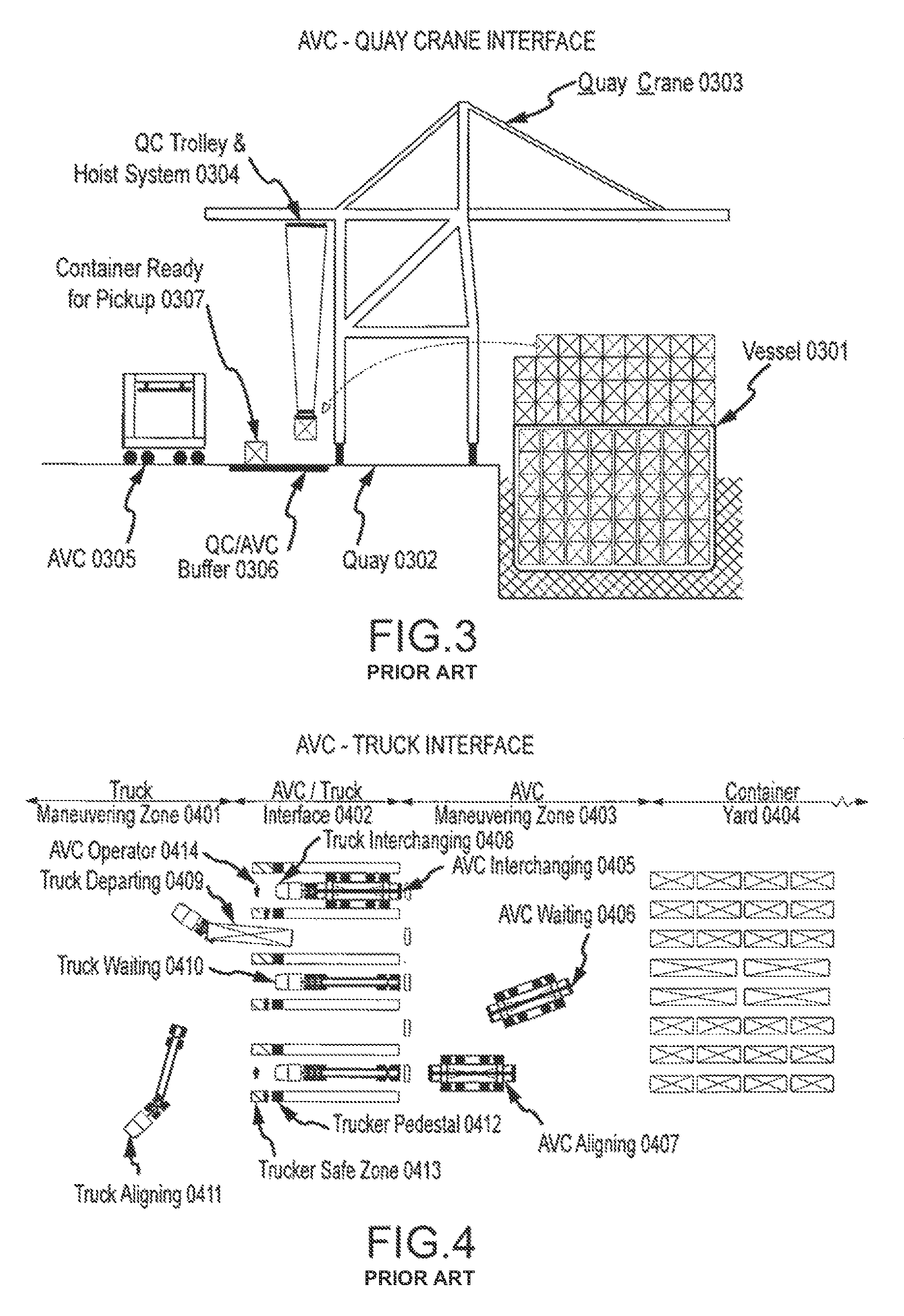Automated marine container terminal and system
a container terminal and automatic technology, applied in the field of port facilities, can solve the problems of difficult to develop effective and reliable instruments to substitute human capabilities for port facilities, effective handling by workers, and different sites, and achieve the effects of enhancing the scope of automation, facilitating the transfer of cargo, and increasing the storage density
- Summary
- Abstract
- Description
- Claims
- Application Information
AI Technical Summary
Benefits of technology
Problems solved by technology
Method used
Image
Examples
Embodiment Construction
[0101]FIG. 1, Generic Port Container Facility, shows the major logical elements of a modern port container terminal. Three major external transport media, (Water 0101, Road 0102, Rail 0103) meet at the marine terminal facility (0104). Containers are transferred between carriers (Vessels 0106, Trucks 0107, and Trains 0108) via the Yard 105. Carriers are served at terminal portals (Wharf 0109, Gate 0110, Rail Yard 0111). The terminal may provide special support services to carrier operators at the portals (Vessels 0112, Truckers 0113, Trains 0114). Containers are received or delivered at portals by portal equipment (Stevedoring cranes 0115, Gate lanes 0116, Rail Yard cranes 0117). Containers are transported between the portals and the Yard 105 by intra-terminal transport equipment (Wharf 0118, Gate 0119, Rail 0120). Transactions across the portals are tracked and managed through Business Information Management 0121. Container handling equipment operations are tracked and managed throu...
PUM
 Login to View More
Login to View More Abstract
Description
Claims
Application Information
 Login to View More
Login to View More - R&D
- Intellectual Property
- Life Sciences
- Materials
- Tech Scout
- Unparalleled Data Quality
- Higher Quality Content
- 60% Fewer Hallucinations
Browse by: Latest US Patents, China's latest patents, Technical Efficacy Thesaurus, Application Domain, Technology Topic, Popular Technical Reports.
© 2025 PatSnap. All rights reserved.Legal|Privacy policy|Modern Slavery Act Transparency Statement|Sitemap|About US| Contact US: help@patsnap.com



